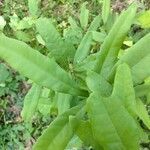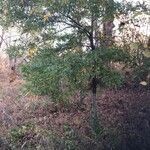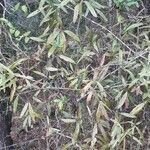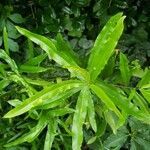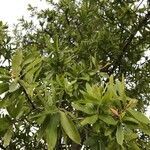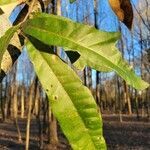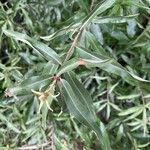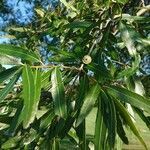Tall shrub, or tree to 25 m; twigs of the season reddish-brown, glabrous; lvs shiny-green above, thin, oblong-linear to lanceolate or oblanceolate, 6–12 × 1–2(–2.5) cm, bristle-tipped, entire, usually cuneate at base, glabrous above with finely reticulate, elevated veinlets, dull (and somewhat paler) green beneath and glabrous or with the stellate pubescence persistent especially in the vein-axils or along the midvein; acorns 1–1.5 cm, the cup shallowly saucer-shaped, its scales closely appressed, pubescent except at the margin. Swamps and moist soil; s. N.Y. to Fla. and Tex., chiefly on the coastal plain, n. in the interior to s. Ill.
A deciduous tree. It grows 30 m high. It is a broadly spreading oak tree. The bark is grey and smooth. It becomes ridged and cracks into plates with age. The leaves are narrow and long. They are 10 cm long by 2.5 cm wide. They end in a small fine point. They are bright green above and paler underneath. They are smooth on both sides. The male and female flowers are borne separately on the same plant. The male flowers are easier to see and are yellow-green in drooping catkins. The fruit are acorns 1.5 cm long. They are about one quarter enclosed in a shallow cup.
